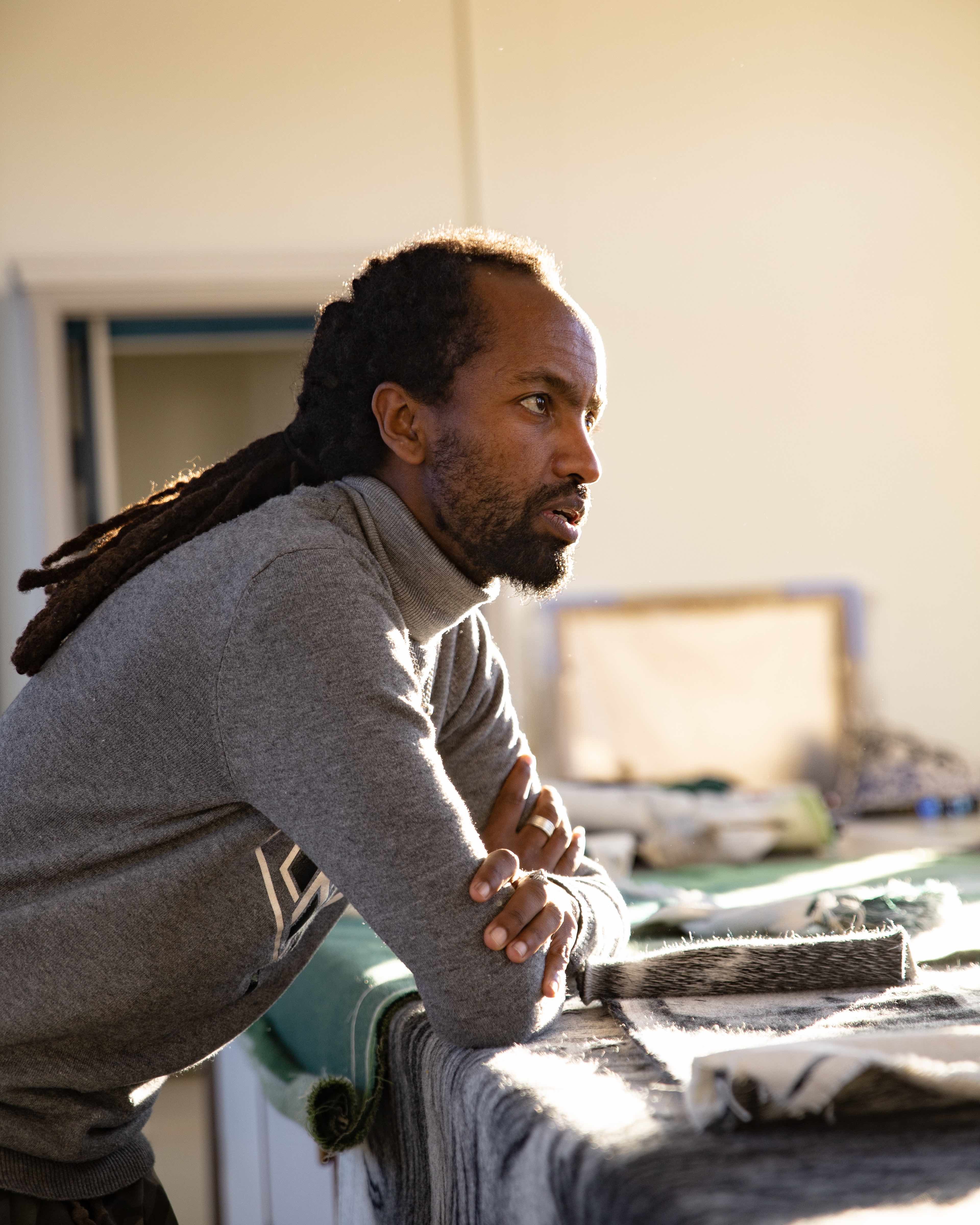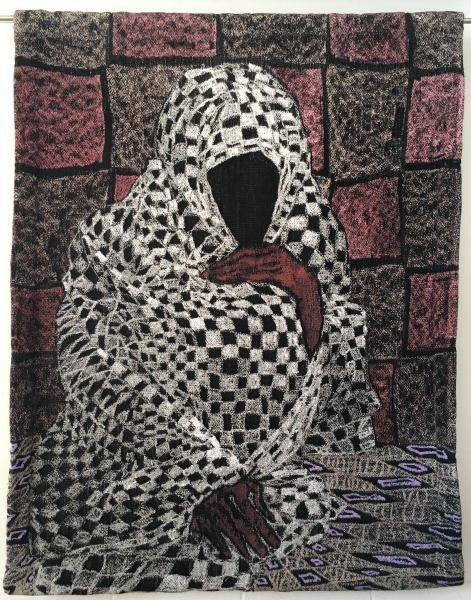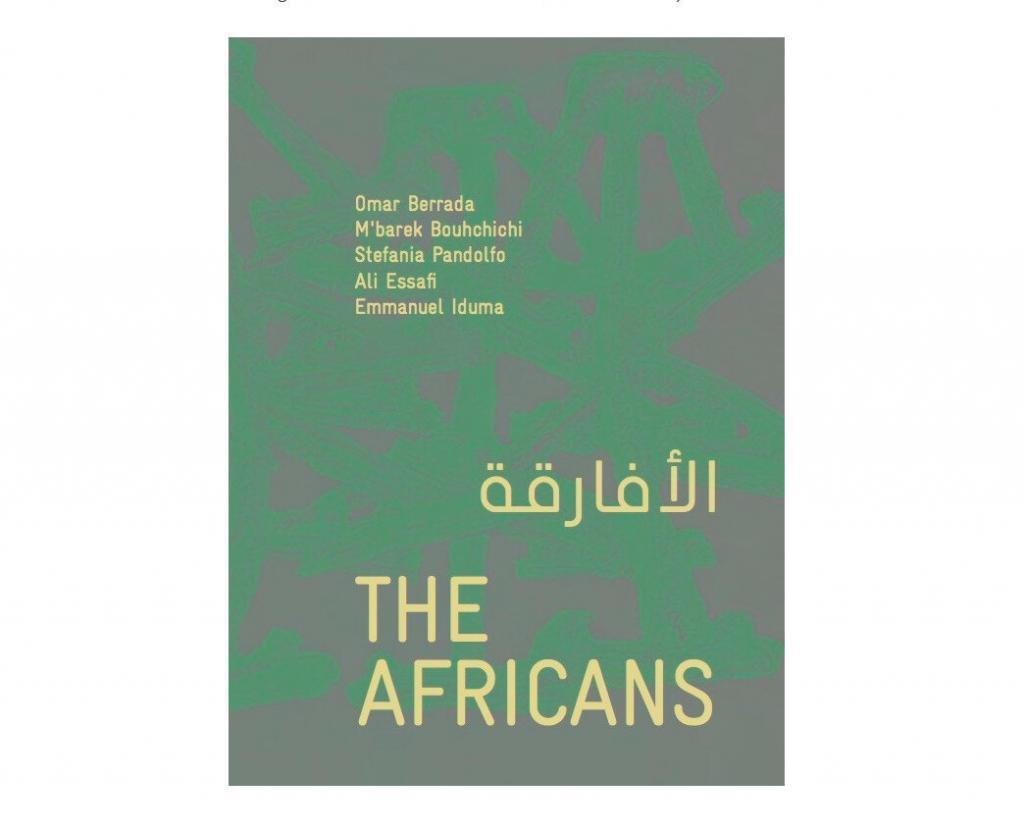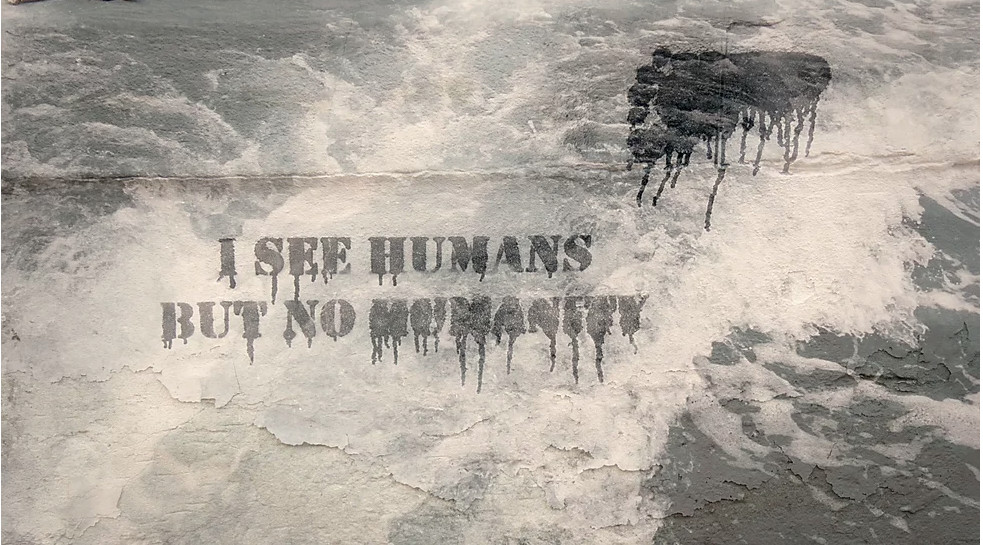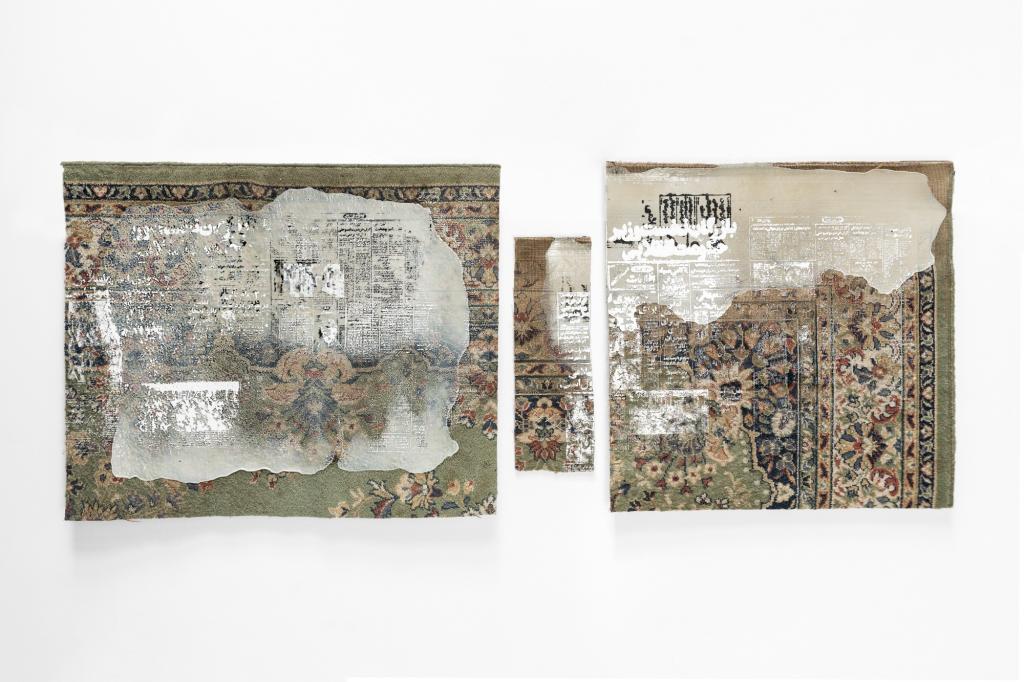In conversation with Leikun Nahusenay
Leikun Nahusenay is a visual artist born in 1982 in Addis Ababa, Ethiopia, where he still lives and works. While primarily identifying himself as a self-taught artist, he nonetheless completed his art degrees from the Ale School of Fine Arts (2006) and Teferi Mekonnen School (2011).
For Nahusenay, the creation of a work of art comes from the mind and the heart. His works are born from pious meditations and are meditatives. In 2018, the artist has been selected for the first edition of Versant Sud artistic residency program in Marseille, France. During his artistic residency, Leikun Nahusenay has created a series of works composed of pastel drawings on cardboard. He also made a large tapestry inspired by his drawings in Aubusson, the best reference of tapestry know-how in France and in the world – is listed as an intangible heritage of humanity by UNESCO since 2009. Artskop3437 spoke with him about the narratives of his works and how he experiences the current situation of Covid-19 as an artist.
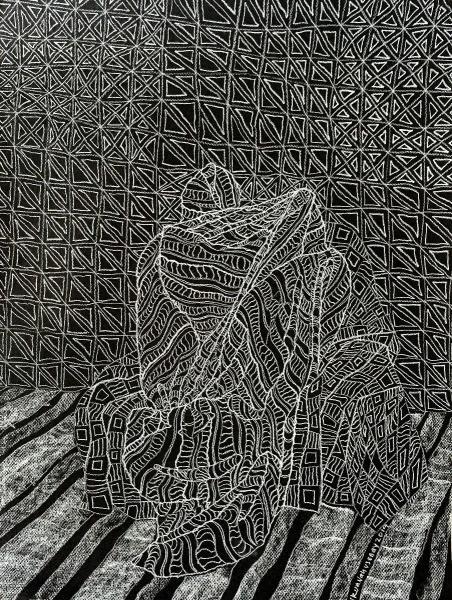
How do you define yourself as an artist ?
I am first and foremost a multidisciplinary artist. I work with collages, photos, painting, woodcutting and graphic design. Despite my degree in woodcutting, my main interest remains drawing. I draw lines in images. I like to experiment. Recently I’ve been working with the peeling of the photo.
Tell us more about the process of creating your drawings.
I enjoy drawing lines in pictures. I make a black and white close-up composition, like a chessboard where I draw the drapery of the garment and then come to the subject of body and soul, which could be a faceless person.
You seem to particularly like the pastel drawing technique as many of your drawings are created using this technique. Can you tell us more about it?
L.N: First of all, pastel is a technique that I feel comfortable in, that I am good at. In addition, pastels allow me to give me more freedom in the expression of my art. When using pastels I feel the work comes to me smoothly, I am able to express my work in the exact forms, colours and shapes that I want.
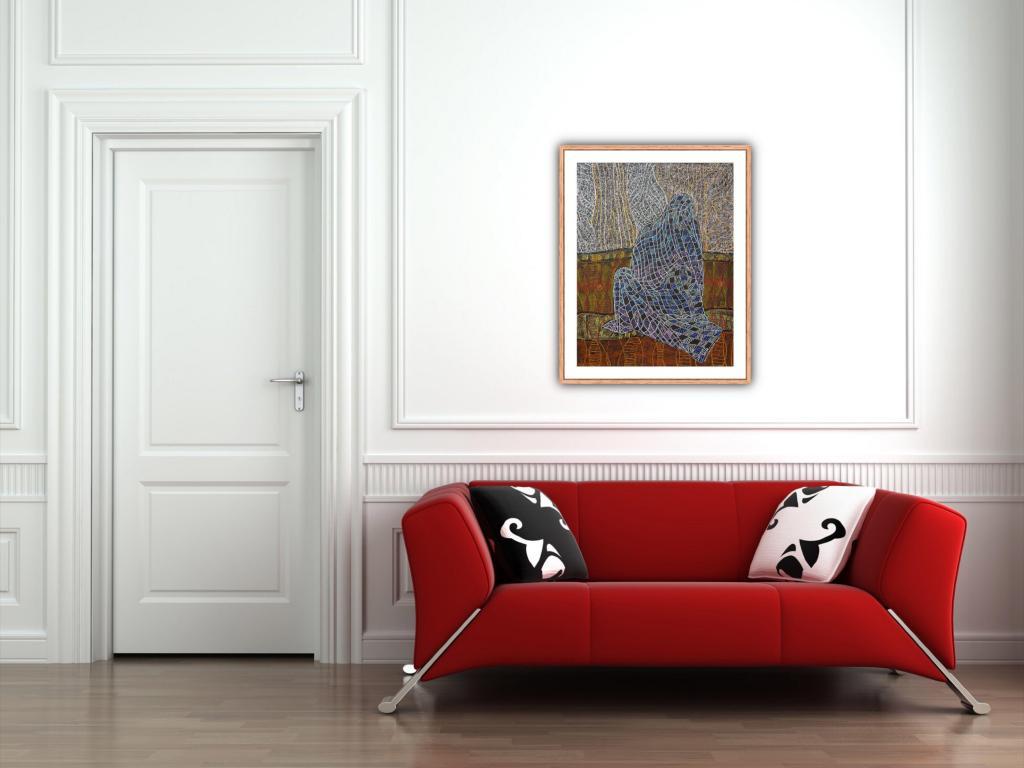
Tell us more about the series “Body vs Soul”? When we look at some of your works of that series, we notice ghostly, faceless silhouettes that recur repeatedly, especially in the works “Enate” or “lips lover VI”?
L.N: “Body vs soul” is the series I worked on during my residency in France. In this body of work, I try to represent how our body and souls are sometimes separated. In certain situations, our body can be present, but our soul / our mind is wandering, is elsewhere. One day, I was sitting in a café in Addis Ababa, and there was a woman sitting at a table further away who seemed to be waiting for her boyfriend. He never showed up. The young woman was physically in the café but she was not present.
In the “Lips lovers” series, organic floral forms are combined with more geometric shapes. What is this series about?
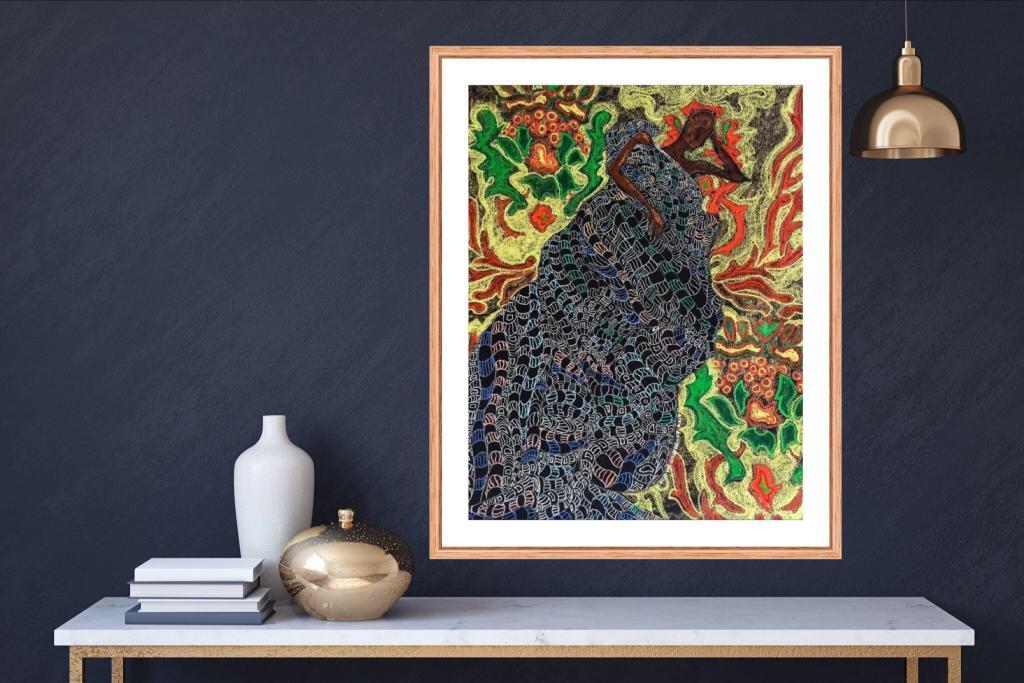
Click on the image to learn more.
L.N: This series also represents the connection (and disconnection) of our ‘body and soul’. The organic floral forms here represent the love stories that cause this (dis)connection. In the ‘lips lovers’ series I represent the traditional way wherein those fresh love kisser try to cover themselves for a kiss, trying to hide from others.
In the work “Enate”, a set of symbols is present. Can you tell us more about it?
L.N: Most of these symbols are representations of the Amharic alphabet. I use Amharic alphabet in my art to give them sound / a voice. Also, I really feel they add to the beauty of it, adding fine art elements: texture, design, symbols. In those words, I express the many things that come to my mind, things for which I wonder whether they are right or wrong, which I question (eg. things that I heard on the radio).
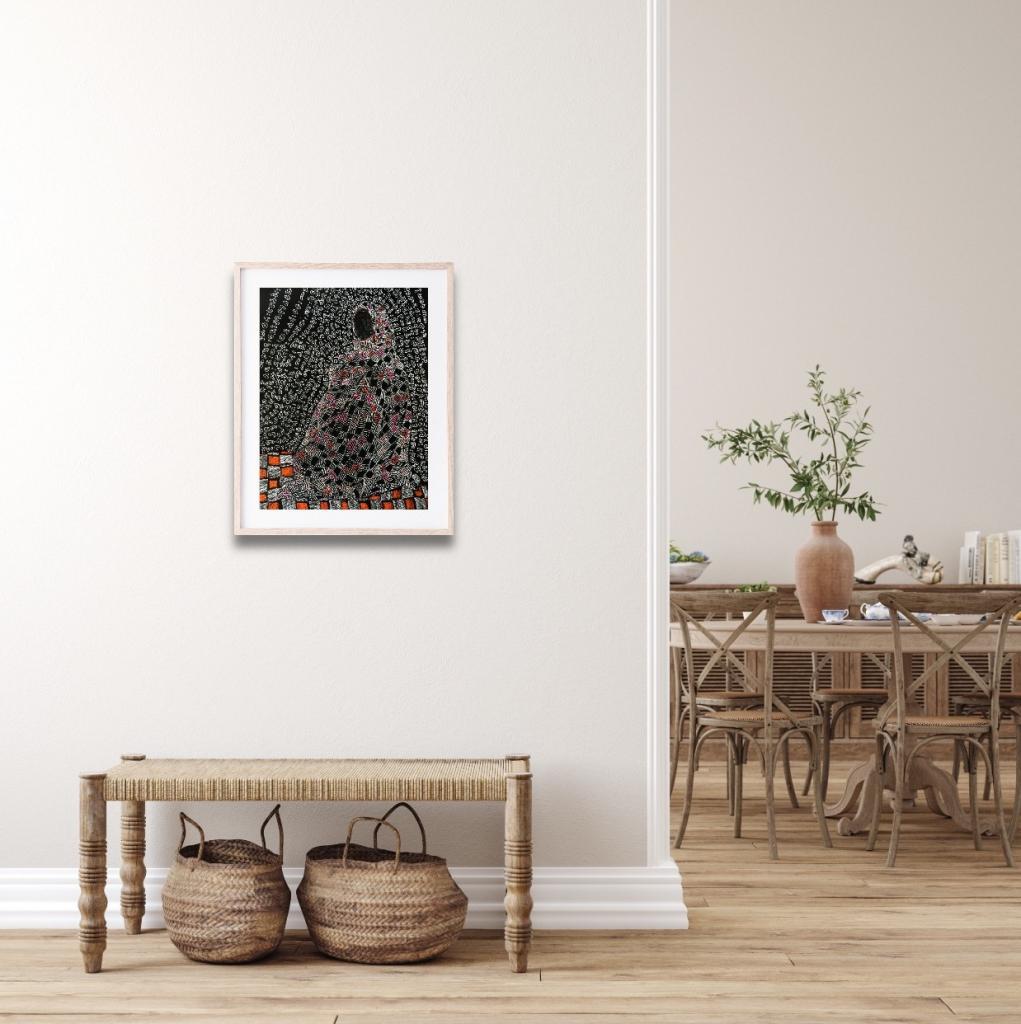
Many of these texts are, for example, Amharic proverbs or expressions of the Ethiopian way of saying things in “Wax & Gold” (wherein “wax” is the obvious meaning, the “gold” is the hidden meaning). With them, I give expression to the contradictions of our existence, as black and white, light and shadow, day and night, absence and presence souls, being here and there, today and tomorrow, etc.; which tells story on ‘shadows’ like… (don’t leave your shadow), (Sharpen shadow) which is related the woman in ‘chess’ is in thought of black & white, day & night, absent & present mood.
I think Shadow has life in me, it can do what we do and also shadow mean time today tomorrow. The woman in chess also in a shadow of here and there.
The works seem to be imbued with spirituality. Can you tell us more?
L.N: I feel that our spiritual experiences mix with the more physical / earthy ones. Like the ‘body Vs soul’ series: our bodies experience one reality, and our soul experience another reality. For example, in the ‘lip lovers’ I wanted to express their strong spiritual connection in the physical act of the kiss.
What did your recent artistic residency with Versant Sud in Marseille teach you?
During my residency with Versant Sud, I mixed my Ethiopian experiences with those lived in Marseille. It was the first time that I made a large tapestry of 100 x 140 cm from one of my drawings. I learned to work with digital tools, whereas in my culture it is common to work with hand weaving. Working on tapestry in Aubusson – which has a long history of weaving in France and in the world -, allowed me to think more about the fabric, the traditions between these two regions Marseille and Addis Ababa. In the future I would like to continue working with fabric more often.
How do you experience the current confinement of the at COVID-19?
L.N: I am actually enjoying to stay at my studio and produce more art. Off course, I miss going out and spending time with friends, however, at the same time, I am using this opportunity to pray, meditate and create art that can cure all human being from the virus.

